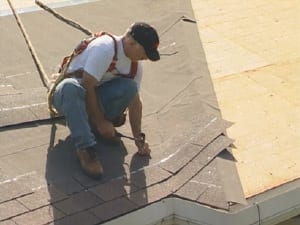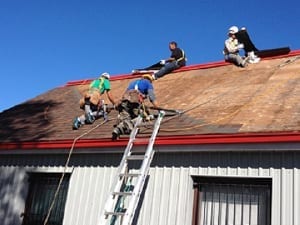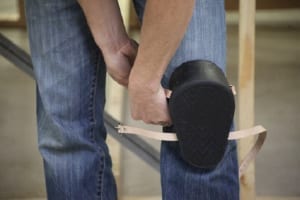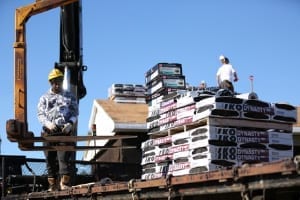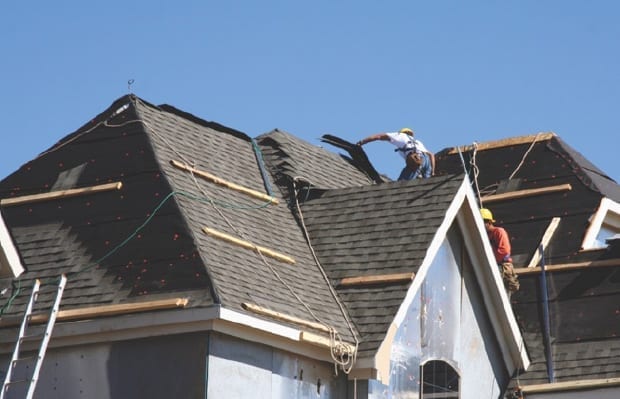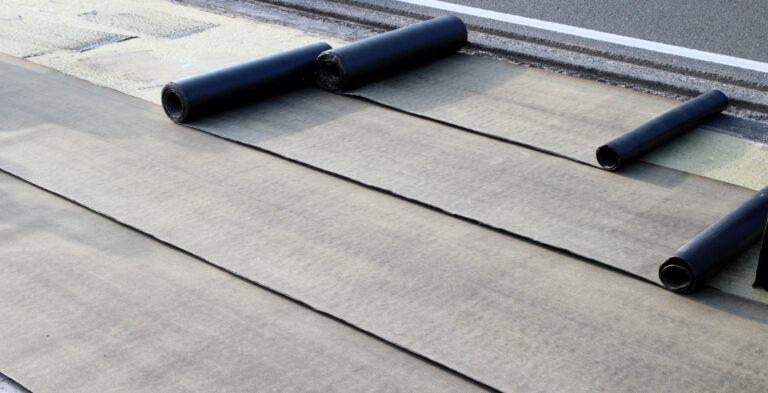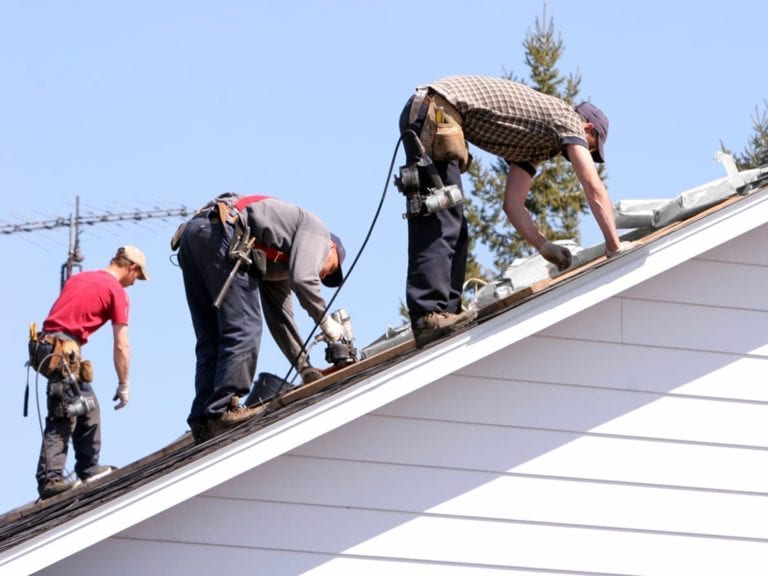Roof Fall Protection Systems and Equipment To Keep Roofers Safe
Table of Contents
- The importance of roof fall protection
- What is roof fall protection?
- Get started with the basics
- Working in a changing industry
- Working for safety’s sake
- Improve yourself, Impress your clients
Follow these principles to help keep your roof fall protection program current and compliant.
Disclaimer – The following information is not certified training material, nor endorsed by training or certification bodies. It is based on anecdotal content.
The importance of roof fall protection
Roof fall protection, or the measures and equipment used to prevent falls from height at a roofing worksite, is a crucial part of any project. Whether you’re an independent contract roofer with your own client base, or a roofing business owner sending employees to jobs, fall protection should form the centerpiece of your safety program.
Here’s why.
Even with strict fall prevention laws and inspection programs in place, year after year, construction workers continue to get hurt, and even die, when working at height. Unfortunately, falls from height (including roofs) continue to be a leading cause.
In 2016 alone, 364 construction workers in the U.S. died in falls – that’s almost one per day.
The good news is, many of these accidents can be prevented with proper roof fall safety systems and equipment. In fact, when the U.S. Occupational Health and Safety Administration (OSHA) recently studied a series of fall-related deaths, they determined that using fall protections would have likely been able to prevent nearly all of them!
Read on to find out how you can not only keep your business compliant with all relevant laws and guidelines, but also help make sure you and your workers make it home safe every day.
What is roof fall protection?
Federal guidelines require roofing employers to protect workers from roof falls when working at height (this should focus on fall from heights as one can also fall down or trip when working at heights and not suffer greatly), using specific fall protection equipment and/or systems. (In Canada, these rules are set out as part of Canada’s Occupational Health and Safety Regulations in the Canada Labour Code).
These guidelines also mandate that employers must give training on this equipment and certain first aid and rescue techniques to give the whole team the knowledge to protect themselves and their coworkers.
These fall protection systems usually include three basic components:
- Guardrail systems
- Safety nets
- Personal fall arrest (PFA) system
When working on low-slope roofs, you may also use a combination of:
- Warning line systems
- Safety monitoring systems
Anyone working at a height of six feet (1.8 meters) or greater must use at least one of these protections, but they often should be used in combination, depending on the type of work. What do these protections look like?
1. Guardrail systems
Guardrails are installed around the perimeter of the roof at low and steep slope sites. They can either be permanent or temporary, but there are detailed requirements for the height, composition and location of these, so be sure you’re familiar with these before you select your system.
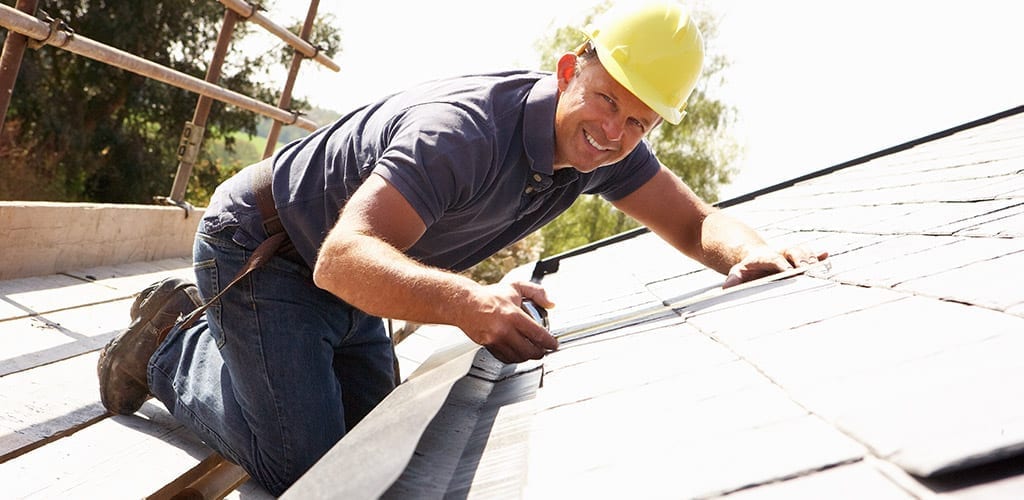
On a steep slope roof, the guardrail must have toe boards.
2. Safety nets
These are webbed or mesh systems made of natural or synthetic fibers (most are made of either nylon or polypropylene rope) and are suspended below a roof site or skylight to catch or stop a falling worker. There are federal regulations around what these must be made of, how many pounds they can withstand, where they should be hung and how often they need to be tested.
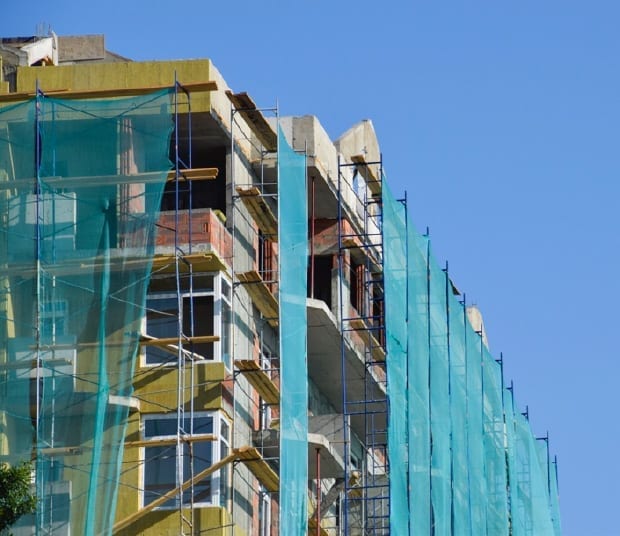
3. Personal Fall Arrest (PFA) systems
Personal Fall Arrest systems, or PFAs, are body harnesses roofers wear and attach to a roof anchor by a lanyard. All components must be able to hold a certain weight, fit in a certain way (and not be a belt, for example) and be tested regularly. Be sure your PFA is certified and in good working condition before you begin your work.
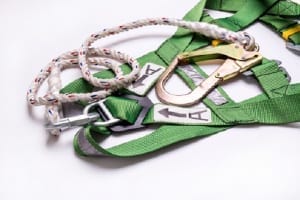
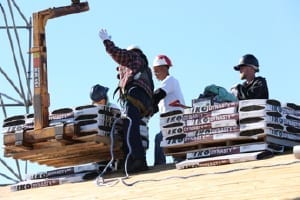
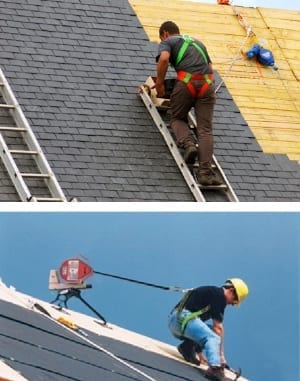
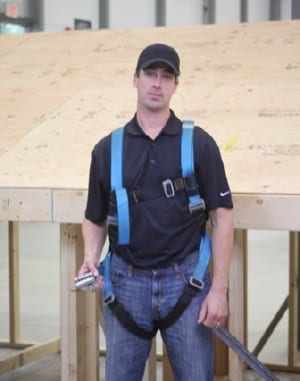
4. Warning line systems
This is a rope, wire or chain barrier that prevents workers from entering an unprotected area. These are heavy-duty warning systems capable of withstanding 500 pounds of pressure to deter workers from entering unprotected areas of the jobsite.
They can be used on a low-slope roof to prevent falls, as long as they’re combined with a guardrail, PFA, safety net or safety monitoring system. These are not part of the required protection for steep roof work.
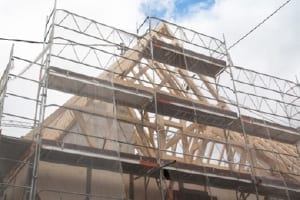
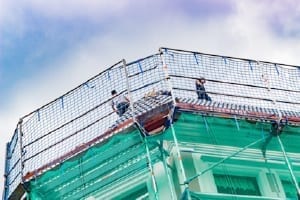
5. Safety monitoring systems
A safety monitoring system is also used for low slope roof fall protection. It’s not a piece of equipment. Rather, it’s a technique you use on your roof site where a person trained to recognize fall hazards (a monitor) watches a single worker and lets them know if he or she is approaching a hazard or working unsafely. This option must be used with a warning line system – never as a single roof fall protection measure. (Unless the roof is narrower than 50 feet.)
Being a monitor requires training to know what to look for and how to respond to an emergency, so be sure your workers – both those working and observing – have up-to-date training credentials.
Get started with the basics.
The OSHA and Canada Labour Codes go into detail about the types of fall protection equipment and measures you must have in place. But it’s always good to keep the basics in mind. Here are some top precautions to consider:
- Wear a PFA harness that fits properly – and keep it connected to a secure roof anchor.
- Always make sure you use the guardrails or lifelines set on your roof site.
- Inspect your safety equipment – hard hat, harness, etc. – before you use it!
- Ensure your working space is neat and free of debris and that your equipment (such as ladders, scaffolding and platforms) are both secure and in solid working condition.
- Make sure any holes (for skylights, etc.) are covered or cordoned off before you get to work.
- Make sure the instructions you have for your work, whether from your client or your employer, are clear, and you have enough time to do the work safely and properly.
(Source: United States Department of Labor and Ontario Ministry of Labour)
Working in a changing industry
Roofing designs continue to change and evolve as architects and consumers keep up with new styles and changing preferences. For example, green building standards are leading to more solar panels and “green roofs” being installed. Also, rooftop gardens continue to increase in popularity – features we never saw in the past. Then there are the ever-popular rooftop patios, which continue to be a trend, but which are now being seen in new venues – like a corporate workplace.
What does this mean for roofers? The more features we add to roofs, the more traffic we can expect on them – whether that’s builders, maintenance staff, or occupants out to enjoy leisure spaces. More people means a greater risk for falls, which means even closer attention needs to be paid to roof fall protection measures at all phases of construction and use.
Lawmakers are keeping up with these trends too, so as new technologies and trends emerge, officials continue to update safety legislation to stay current. This means you, as a roofer or a roofing employer, must keep a close eye on not just popular new roof features, but resulting new laws that may go along with them.
Working for safety’s sake
With this background, and these changes in mind, here are some guiding principles to keep in mind as you continuously improve your roof fall safety program so it’s not just compliant with relevant regulations, but also helps get you and your employees home safe to your families each day.
1) Re-frame your culture
Safety should be a part of everything you do – not something you tack on after you’ve developed your work plan. Think: “safety first, safety always.”
2) Keep up with changes
As a contract roofer, or an employer, you need to know fall protection regulations like the back of your hand. To stay on top of any changes, be sure to visit the OSHA site regularly (in Canada, your provincial site and the Canada Labour Code).
But that’s just step one. To stay ahead of safety changes, you should also get to know the industry.
Try:
- Joining professional associations such as the National Roofing Contractors Association (NRCA), or the Canadian Roofing Contractors’ Association (CRCA). Be sure also to add your email to their mailing lists – they often publish newsletters and event updates to keep you in the loop. Or find a regional association in your state or province.
- Reading trade publications, like Professional Roofing magazine (published by the NRCA) or Roofing Contractor magazine, to get an understanding of the latest fall protection technologies, events, news and issues that are affecting roofers.
- Learn what the other guys are doing wrong. OSHA publishes an annual list of the top 10 most common violations they find during construction safety inspection. (Guess what? Fall protection is almost always near the top!) This will help you keep an eye out to make sure you’re not making the same mistakes.
- Staying on top of technology. There are cool new products being produced on a regular basis that improve on old technologies. For example, roof anchors are now being developed to ensure they don’t wreck the material of the roof. Do a monthly Internet search for “roof fall protection technologies” or talk to your safety equipment vendor to see what new products they might be bringing in that can increase efficiency of your work while at the same time improving roof site safety.
- Attending roofing trade shows and conferences. The best way to incorporate the newest safety equipment into your worksite is to see what’s out there.
If you’re on a fixed budget, or deal with unique projects that need custom equipment, a trade show will give you the chance to see a broad range of vendors in a short amount of time, which can help you find the right product for your work. Meanwhile, conferences will give you a deeper understanding of what trends or issues your industry faces – and hopefully give you ideas on how to work with them. (The International Roofing Expo is a great place to start, but also keep an eye out for regional or local events.)
Expanding your safety knowledge might at first seem a bit dry, but you may find the more you learn about fall protection safety, the more interested you become.
Who knows, maybe you’ll become the knowledgeable go-to person in your area for safety advice and resources!
3) Training, training, training
Making sure you and your employees are properly trained in fall protection, safety equipment and rescue is required by law. So, you should already be signing up both yourself and your staff for regular certified training.
But to really build a safety culture, you should start to consider safety education an investment in your business, not a chore that has to be checked off a project list.
Consider going over and above what’s required by taking specialty courses offered in your area, even if your certification is current. Attend seminars and talks that local vendors or organizations might offer. Or consider becoming an instructor yourself.
If you’re an employer, include training as part of your employee evaluations so you know they will attend. This will also signal to your workers that their safety is as important to you as getting the job done.
Also think about making time to invite trainers or experts to host short seminars or lunch-and-learns on site. If you pick up the bill for lunch, you can probably expect pretty solid attendance.
4) Talk to your workers
As an employer, you may not be on-site all the time, or see the up-close work taking place at secondary sites. To get an idea of how your fall prevention systems are working, be sure to keep lines of communication open with your teams. Ask your workers what they think of the fall protection measures you have in place. They may be legally compliant, but is there a way to make them better, more efficient or more comfortable for your roofers?
For example, is a newly introduced PFA harness bothering them? Maybe you could explore a different style.
Or, are they working faster or slower thanks to different features you’ve introduced to your fall prevention program? Consider if there are different equipment or materials you could use to make their lives easier, while still protecting their safety.
Encourage ongoing, everyday conversation, and keep your door open to questions or concerns to make sure no hazards come up without your knowledge.
Improve yourself, impress your clients
Roof fall prevention equipment saves lives. That’s why the law requires you to use it. But going over and above with safety training and education can improve your business by expanding your knowledge, improving your employee relations and giving your customers the confidence that you’re doing everything you can to do the job not just right, but safely.
